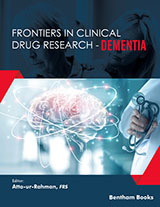Abstract
Cholesterol is the molecule essential for life, but also with a possible detrimental role. Apart from being a vital structural constituent of the cells, cholesterol is a factor involved in many important cell processes. However, it has been known that high blood cholesterol is associated with many pathological conditions. An elevated level of cholesterol is linked with cardiovascular disease, diabetes and neurodegenerative disorders. Almost quarter of the total cholesterol in the body resides in the brain. This vast pool is synthesized in situ and it is almost completely isolated and independent from the periphery due to the presence of blood-brain barrier. In the central nervous system, cholesterol plays important role in neural cells structure and functions, including synaptic transmission. Due to this, its content must be precisely maintained in order to keep brain function well. However, cholesterol is critically challenged in the aging brain and disturbed in several of pathological conditions, like Huntington’s disease (HD), Parkinson’s disease (PD), Niemann-Pick type C (NPC) disease and Smith-Lemli Opitz syndrome (SLOS), traumatic brain injury, multiple sclerosis (MS) and in Alzheimer’s disease (AD). Altered cholesterol metabolism has been extensively implicated in the pathogenesis of AD. A growing amount of evidence underscores the link between disturbed intracellular trafficking of cholesterol in the brain and the formation of amyloid plaques. The inheritance of the epsilon4 allele of the Apolipoprotein E (ApoE), the main transport protein for cholesterol in the brain represents the main risk factor for late onset form of Alzheimer’s disease. Other genetic polymorphisms associated with critical points in cholesterol metabolism may also contribute to the AD pathogenesis. Hypercholesterolemia has been considered nowadays also as a risk factor, and all of these players are thought to promote the production of beta-amyloid and development of AD. Additional proof towards cholesterol involvement in the pathogenesis of AD gave epidemiological data of the cholesterol-lowering drugs, statins that have been shown to decrease the risk for AD. This chapter is aimed to summarize existing knowledge about the brain cholesterol metabolism, how the homeostasis is changed during aging and in various neurodegenerative diseases, with special emphasis on Alzheimer’s disease. As a final point, we will try to give a full insight into the environmental influences (including dietary restriction and statins therapy) on brain cholesterol homeostasis.
Keywords: Aging, Alzheimer’s disease, Brain injury, Central nervous system, Cholesterol homeostasis, Cholesterol metabolism, Dietary restriction, Neurodegenerative diseases, Oxysterols, Statins.






















